Competition in the Promised Land: Black Migrants in Northern Cities and Labor Markets
| Download Datasets in All Chapters (In progress, updated 10/17/2016) |
- Chapter 1: Black Migration from the South in Historical Context
- Chapter 2: Who Left the South and How Did They Fare?
- Chapter 3: Competition in Northern Labor Markets
- Chapter 4: Black Migration, White Flight
- Chapter 5: Motivations for White Flight: The Role of Fiscal/Political Interactions
Chapter 1: Black Migration from the South in Historical Context
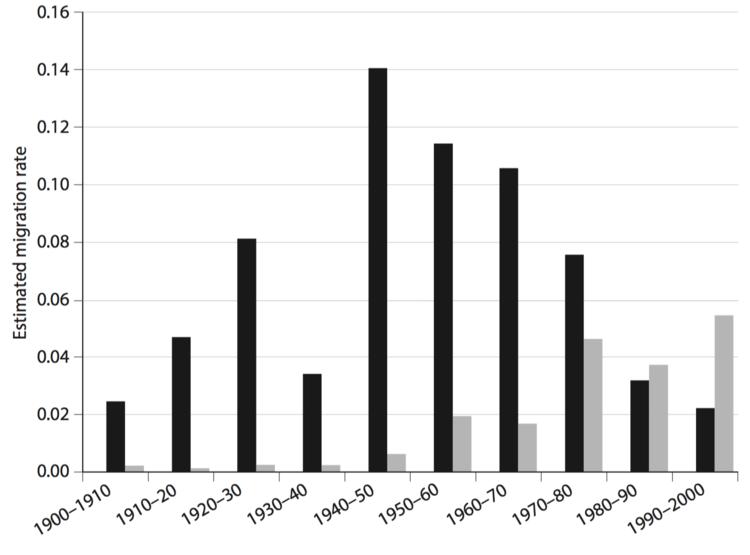
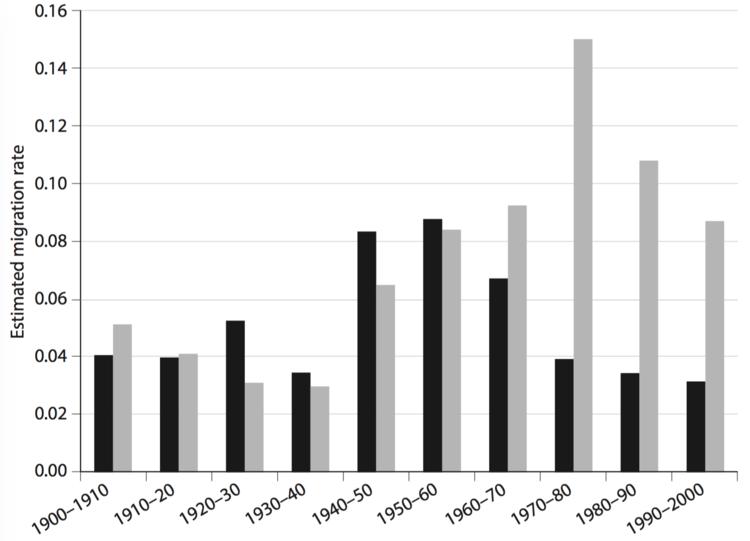


Chapter 2: Who Left the South and How Did They Fare?
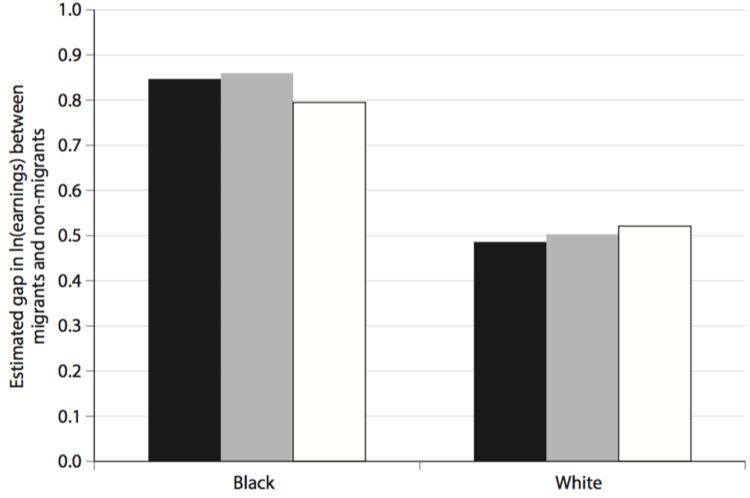


Leaving the low-wage South provided black migrants with a substantial economic return. Blacks who settled in the North doubled their earnings relative to men who stayed in the South. I find a similar earnings advantage in the full population or when comparing pairs of brothers who moved to different regions, suggesting that black migrants were not particularly selected from the southern population. In fact, migrants were more likely to hail from households at either the top or the bottom of the occupational distribution. Migrants' earnings also kept pace with northern-born blacks, both upon first arrival in the North and after spending more time in the northern economy.
Chapter 3: Competition in Northern Labor Markets
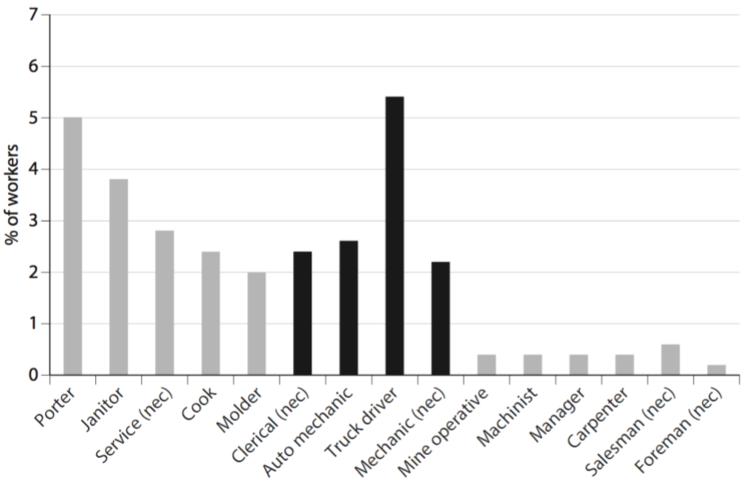
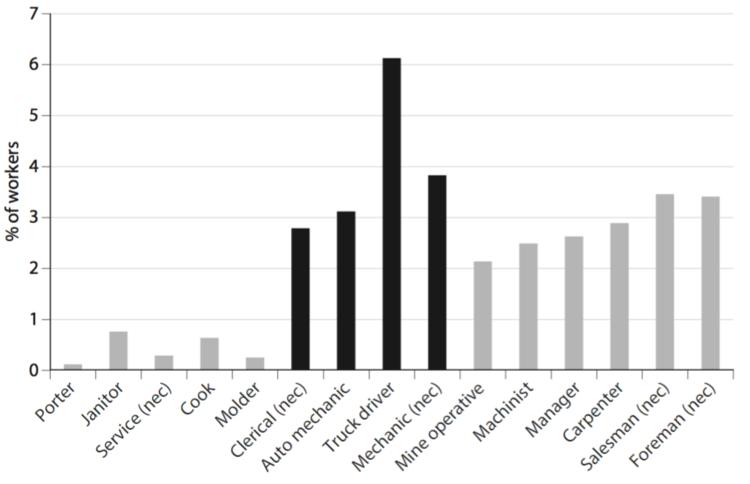

Slow black economic progress in the North was due, in part, to a steady inflow of southern black migrants, who competed with existing black workers in the North, keeping wages low. To some extent, black migrants were more substitutable with other black workers simply because they had similarly low levels of education. But black migrants were also closer substitutes for northern-born blacks within skill cells defined by years of schooling and work experience. I estimate that if not for this ongoing migration, northern blacks would have closed a portion of the remaining earnings gap with whites. Accounting for the lower quality of black schooling in the South can explain around two-thirds of the weak substitution between otherwise similarly skilled blacks and whites. The remaining racial division suggests that blacks faced additional barriers in the northern labor market.
Chapter 4: Black Migration, White Flight
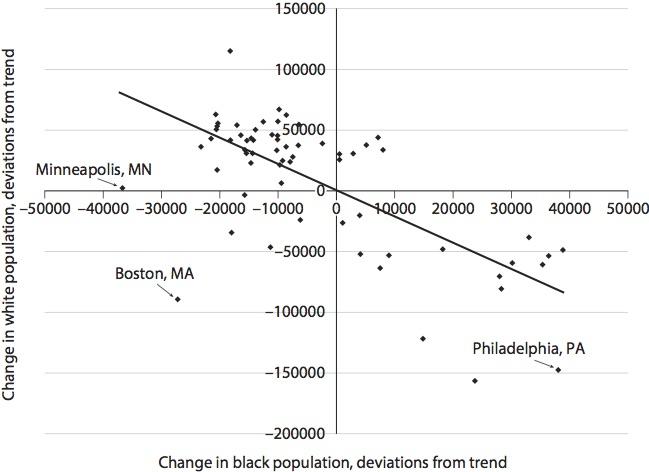

From 1940 to 1970, the black population share in northern cities quadrupled along with new in-migration from the South. Even those black newcomers who could afford to settle in the suburbs were often prevented from moving to a suburban town. A portion of white suburbanization can be traced to a response to black arrivals in central cities ("white flight"). My best causal estimates suggest a more than two-for-one black-to-white departure rate. Black residential isolation increased as whites left the city; by 1970, the average black resident of a northern city lived in a neighborhood that was 75 percent black.
Chapter 5: Motivations for White Flight: The Role of Fiscal/Political Interactions
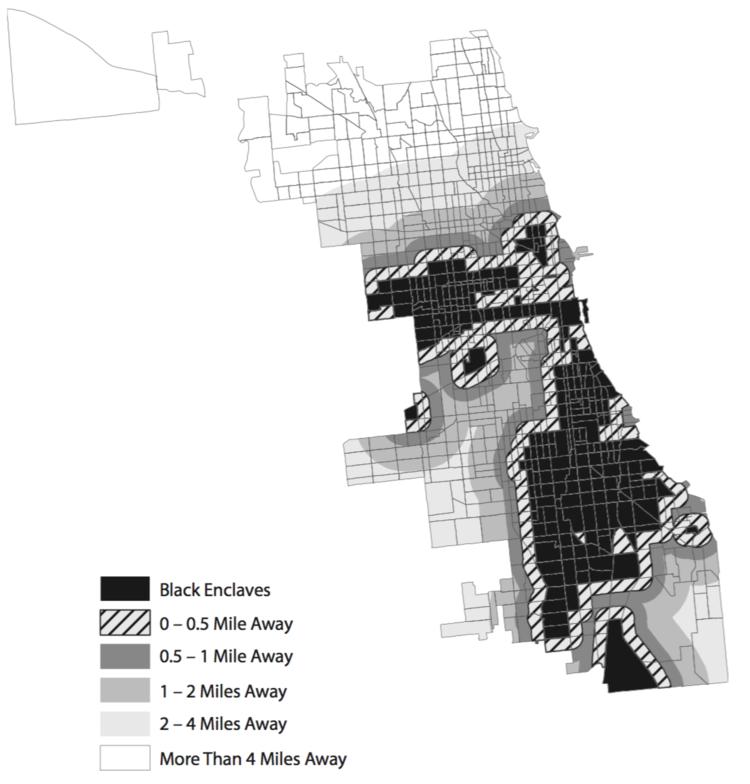

Many urban whites lived in neighborhoods far from expanding black enclaves. These distant neighborhoods experienced little racial change, suggesting that concerns about new black neighbors cannot fully explain the phenomenon of white flight. This chapter proposes that some white households left central cities to avoid fiscal/political interactions with black arrivals through shared municipal elections and public schools. I found that homebuyers and renters were willing to pay more for a similar unit located in a racially homogeneous suburb. But this price gap can be entirely explained by differences in income levels between blacks and whites. After school desegregation plans were implemented in the 1970s, race itself became more salient.

